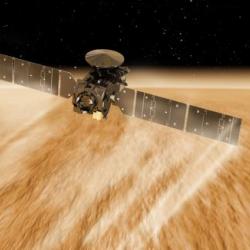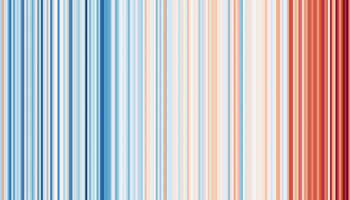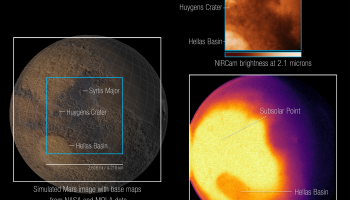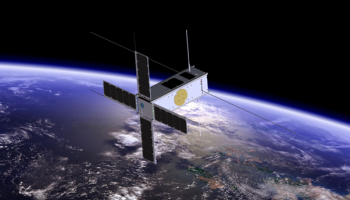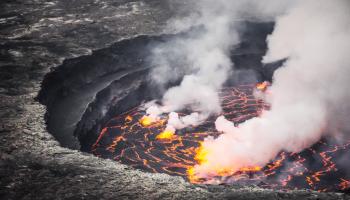On the occasion of the opening of the Federal Climate Centre, a call for artwork is being launched. It aims to announce the location of this new Climate Centre and build a bridge to the public space.
The James Webb Space Telescope captured its first images and spectra of Mars on September 5, 2022. The telescope’s remarkable infrared sensitivity provides a unique perspective on our neighboring planet, complementing data collected by orbiters, rovers, and other telescopes.
Last week (September 2) marked the two-year anniversary of PICASSO’s launch, the first CubeSat mission of the Royal Belgian Institute for Space Aeronomy. It has demonstrated the feasibility of atmospheric remote sensing and in-situ ionospheric plasma measurement with a CubeSat and has taught us valuable lessons about this new technology.
On 22 May 2021, the Nyiragongo volcano (DR Congo) erupted. Lava flows destroyed part of the nearby city of Goma and thousands of people fled. In a study published in Nature, an international team of researchers shows that this eruption could not have been predicted.
The Principal Investigator (PI) for the NOMAD instrument onboard ESA’s ExoMars Trace Gas Orbiter - currently orbiting and observing the planet Mars – is the group Planetary Atmospheres of BIRA-IASB. Consequently, it is up to our researchers and engineers of this group to handle, among other things, the calibration (to check how accurately the instrument is working) and the set-up and maintenance of the data pipeline (the software that converts all the incoming raw data into information that the scientists can analyse).
Researchers of the Royal Belgian Institute for Space Aeronomy have no need for energy drinks in order to get airborne, they simply work together with Dr Thomas Ruhtz’s team at Freie Universität Berlin (FUB) who have an airplane at their disposal. Together with the Université Libre de Bruxelles (ULB), each of the three institutes contribute their equipment and expertise to the ESA-funded NITROCAM campaign for the measurement of air pollution due to nitrogen compounds.

